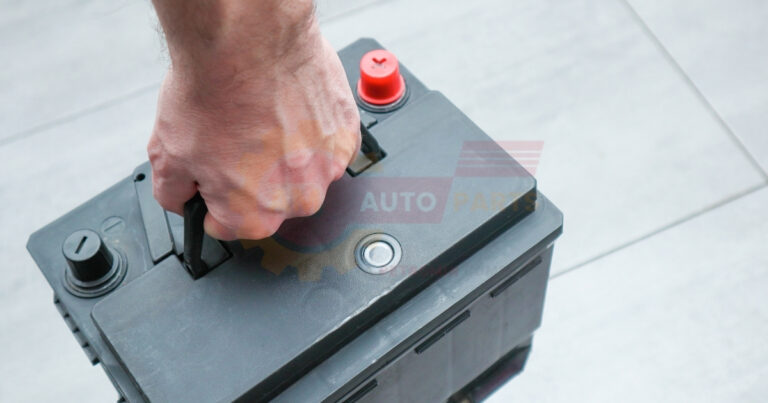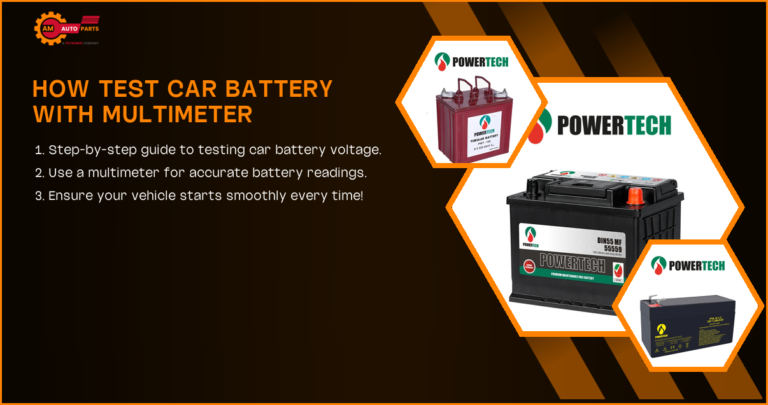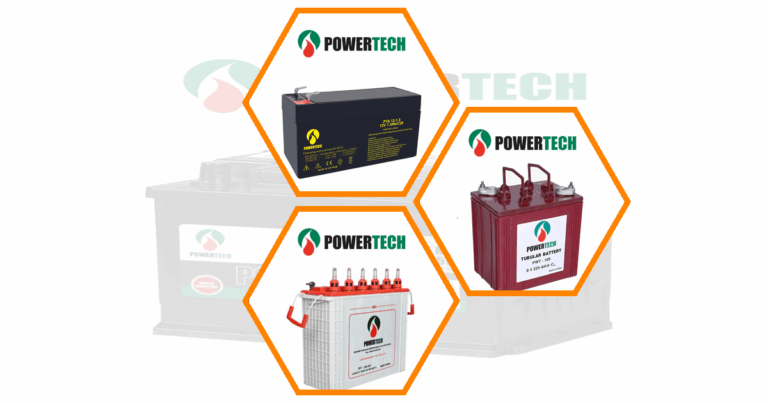What Are Car Batteries Made Of: Understanding the Components and Materials
Car batteries are essential components of any vehicle, providing the necessary power to start the engine and run electrical systems. Understanding what car batteries are made of can help you make informed decisions about maintenance, replacement, and recycling. This article delves into the materials and components that make up both traditional and electric car batteries.
What Are Car Batteries Made Of: Key Components and Materials
Car batteries come in various types, each with unique materials and components. The two primary types are lead-acid batteries, commonly used in traditional vehicles, and lithium-ion batteries, which power electric vehicles.
Lead-Acid Batteries: Traditional Car Battery Composition
Lead-acid batteries are the most common type of car battery. They consist of lead plates submerged in a sulfuric acid electrolyte. This combination creates a chemical reaction that produces electricity. The lead plates are crucial for storing and releasing energy, while the sulfuric acid acts as a medium for the chemical reaction.
- Lead Plates : Provide the structure and storage for electrical energy.
- Sulfuric Acid : Facilitates the chemical reaction necessary for power generation.
- Separator Material : Prevents short-circuiting by keeping the lead plates apart.
Lithium-Ion Batteries: Electric Vehicle Battery Composition
Lithium-ion batteries are the backbone of electric vehicles. They are made of several key materials, including lithium, cobalt, nickel, manganese, and graphite. These materials work together to store and release energy efficiently, making them ideal for electric cars.
- Lithium : The primary element for energy storage.
- Cobalt and Nickel : Enhance battery stability and energy density.
- Manganese and Graphite : Improve conductivity and structural integrity.
Types of Car Batteries and Their Composition
Different types of car batteries have distinct compositions, each suited for specific applications and vehicle types.
Flooded Lead-Acid Batteries
Flooded lead-acid batteries are the oldest type of car battery. They contain liquid electrolyte and require regular maintenance, such as topping up with distilled water. These batteries are known for their reliability and cost-effectiveness.
- Liquid Electrolyte : Requires regular maintenance.
- Durable Design : Suitable for various climates and conditions.
Absorbed Glass Mat (AGM) Batteries
AGM batteries are a type of lead-acid battery that uses a fiberglass mat to absorb the electrolyte. This design makes them spill-proof and maintenance-free, offering better performance and longevity than traditional flooded batteries.
- Fiberglass Mat : Absorbs electrolyte, preventing spills.
- Maintenance-Free : No need for regular topping up.
Gel Cell Batteries
Gel cell batteries use a gel-like electrolyte, making them highly resistant to vibration and shock. They are ideal for off-road vehicles and applications where durability is crucial.
- Gel Electrolyte : Provides stability and resistance to vibration.
- Long Lifespan : Suitable for rugged environments.
Lithium-Ion Batteries for Electric Vehicles
Lithium-ion batteries are the preferred choice for electric vehicles due to their high energy density and efficiency. They are lightweight and can store more energy than traditional batteries, making them ideal for long-range electric cars.
- High Energy Density : Stores more energy in a compact size.
- Lightweight Design : Enhances vehicle efficiency and range.
What Is a Car Battery Made Of: Essential Elements
Car batteries are composed of several essential elements that work together to store and release energy efficiently.
Lead Plates and Lead Dioxide
Lead plates and lead dioxide are the primary components of lead-acid batteries. They provide the necessary structure for storing electrical energy and facilitate the chemical reactions that generate power.
- Lead Plates : Store and release electrical energy.
- Lead Dioxide : Enhances battery efficiency and performance.
Sulfuric Acid Electrolyte
Sulfuric acid is the electrolyte used in lead-acid batteries. It facilitates the chemical reactions between the lead plates, allowing the battery to generate and store electricity.
- Chemical Medium : Enables energy generation and storage.
- Corrosive Nature : Requires careful handling and maintenance.
Separator Material
Separator material is used in lead-acid batteries to prevent short-circuiting by keeping the lead plates apart. This material is crucial for ensuring the battery’s safety and longevity.
- Prevents Short-Circuiting : Ensures safe operation.
- Enhances Battery Life : Reduces wear and tear on components.
Battery Case and Terminals
The battery case and terminals are essential for housing the internal components and providing a connection point for the vehicle’s electrical system. They are typically made of durable materials to withstand harsh conditions.
- Durable Housing : Protects internal components.
- Connection Points : Facilitates power transfer to the vehicle.
What Is an Electric Car Battery Made Of: Key Materials
Electric car batteries are composed of several key materials that enable efficient energy storage and release.
Lithium
Lithium is the primary element used in electric car batteries. It provides high energy density, allowing the battery to store more energy in a compact size.
- High Energy Density : Enables long-range electric vehicles.
- Lightweight : Reduces overall vehicle weight.
Cobalt
Cobalt is used in electric car batteries to enhance stability and energy density. It helps improve the battery’s overall performance and lifespan.
- Enhances Stability : Improves battery performance.
- Increases Energy Density : Allows for more efficient energy storage.
Nickel
Nickel is another crucial material in electric car batteries. It contributes to the battery’s energy density and helps improve its overall efficiency.
- Improves Efficiency : Enhances energy storage capabilities.
- Increases Energy Density : Supports long-range electric vehicles.
Manganese
Manganese is used in electric car batteries to improve conductivity and structural integrity. It helps ensure the battery’s reliability and performance.
- Enhances Conductivity : Supports efficient energy transfer.
- Improves Structural Integrity : Ensures long-lasting performance.
Graphite
Graphite is used as an anode material in electric car batteries. It provides excellent conductivity and helps improve the battery’s overall efficiency.
- Excellent Conductivity : Supports efficient energy transfer.
- Enhances Efficiency : Contributes to long-range capabilities.
Understanding the Manufacturing Process
The manufacturing process for car batteries varies depending on the type of battery being produced.
Lead-Acid Battery Production
Lead-acid battery production involves several steps, including the formation of lead plates, assembly of components, and filling with sulfuric acid. This process requires precision and expertise to ensure the battery’s performance and longevity.
- Lead Plate Formation : Creates the structure for energy storage.
- Component Assembly : Ensures proper alignment and functionality.
Lithium-Ion Battery Production
Lithium-ion battery production involves the creation of electrodes, assembly of cells, and integration into battery packs. This process requires advanced technology and materials to ensure the battery’s efficiency and safety.
- Electrode Creation : Forms the basis for energy storage.
- Cell Assembly : Integrates components for optimal performance.
Maintaining Your Car Battery: Prolonging Lifespan and Performance
Proper maintenance is crucial for extending the lifespan and performance of your car battery.
Proper Charging Techniques
Using the correct charging techniques can prevent overcharging and extend your battery’s life. It’s essential to use a compatible charger and follow manufacturer guidelines.
- Prevents Overcharging : Extends battery lifespan.
- Ensures Compatibility : Follows manufacturer guidelines.
Regular Inspection and Cleaning
Regular inspection and cleaning of your car battery can prevent corrosion and ensure optimal performance. Check for signs of wear and clean terminals to maintain efficiency.
- Prevents Corrosion : Ensures optimal performance.
- Maintains Efficiency : Extends battery lifespan.
Temperature Considerations
Extreme temperatures can affect your car battery’s performance and lifespan. It’s essential to protect your battery from excessive heat or cold to ensure reliability.
- Protects from Extreme Temperatures : Ensures reliability.
- Extends Lifespan : Maintains optimal performance.
Choosing the Right Battery for Your Vehicle
Selecting the right battery for your vehicle involves understanding specifications, compatibility, and climate considerations.
Understanding Battery Specifications
Battery specifications, such as voltage and capacity, are crucial for ensuring compatibility with your vehicle. Check your vehicle’s manual for recommended specifications.
- Ensures Compatibility : Matches vehicle requirements.
- Optimizes Performance : Supports electrical systems.
Compatibility with Your Vehicle Model
Choosing a battery compatible with your vehicle model is essential for optimal performance. Consult your vehicle’s manual or a professional for guidance.
- Ensures Optimal Performance : Matches vehicle requirements.
- Prevents Issues : Supports electrical systems.
Climate Considerations
Climate can affect your battery’s performance and lifespan. Choose a battery designed for your region’s climate to ensure reliability.
- Ensures Reliability : Matches climate conditions.
- Extends Lifespan : Maintains optimal performance.
The Role of Car Batteries in Vehicle Performance
Car batteries play a crucial role in vehicle performance, powering essential systems and storing energy.
Starting the Engine
Car batteries provide the necessary power to start the engine, ensuring your vehicle is ready to go when you are. A reliable battery is essential for consistent performance.
- Provides Starting Power : Ensures vehicle readiness.
- Supports Consistent Performance : Enhances reliability.
Powering Electrical Systems
Car batteries power various electrical systems, such as lights, radio, and air conditioning. A well-maintained battery ensures these systems function properly.
- Powers Electrical Systems : Supports vehicle functionality.
- Ensures Proper Functioning : Enhances comfort and convenience.
Energy Storage in Electric Vehicles
In electric vehicles, batteries store energy for propulsion, making them a critical component. Efficient energy storage is essential for long-range capabilities.
- Stores Energy for Propulsion : Supports electric vehicle performance.
- Enhances Long-Range Capabilities : Ensures efficient energy use.
Environmental Impact of Car Battery Materials
The materials used in car batteries have significant environmental implications, making recycling and sustainable practices crucial.
Lead-Acid Battery Recycling
Lead-acid batteries are highly recyclable, with over 95% of their components being reusable. Recycling helps reduce environmental pollution and conserves natural resources.
- High Recyclability : Over 95% of components are reusable.
- Reduces Pollution : Prevents hazardous waste from entering the environment.
Lithium-Ion Battery Recycling Challenges
Recycling lithium-ion batteries is more complex due to the variety of materials used. However, advancements in technology are improving recycling processes and reducing environmental impact.
- Complex Recycling Process : Requires advanced technology.
- Improving Techniques : Enhances sustainability and resource recovery.
Future Trends in Car Battery Materials
Innovations in car battery materials are paving the way for more efficient and sustainable energy storage solutions.
Solid-State Batteries
Solid-state batteries offer higher energy density and improved safety compared to traditional batteries. They use a solid electrolyte, reducing the risk of leaks and fires.
- Higher Energy Density : Supports longer-range electric vehicles.
- Improved Safety : Reduces risk of leaks and fires.
Sodium-Ion Batteries
Sodium-ion batteries are an emerging technology that offers a more sustainable alternative to lithium-ion batteries. They use abundant materials, reducing reliance on scarce resources.
- Sustainable Alternative : Uses abundant materials.
- Reduces Resource Dependence : Enhances sustainability.
Aluminum-Air Batteries
Aluminum-air batteries are lightweight and offer high energy density, making them ideal for electric vehicles. They use aluminum as the primary material, providing a sustainable energy storage solution. Battery charging process Electricity flows into a battery to refill its energy making it ready to power devices again Car battery compatibility Different cars need specific types of batteries so it’s important to choose the right one that fits and works well with your vehicle
Battery health percentage Automotive electrical measurement helps check if car parts that use electricity are working right It uses special tools to test things like batteries wires and lights in vehicles Jumpstart dead battery is a quick way to get your car running again when the battery is out of power You can use special cables to connect your car’s dead battery to another car’s working battery to bring it back to life
Automotive Power Depletion happens when a car’s battery loses energy over time This can make it hard for the car to start or run its electrical parts properly Automotive energy solutions help cars and trucks use different types of power to run These solutions include electric batteries hydrogen fuel cells and more efficient engines for vehicles
- Lightweight Design : Enhances vehicle efficiency.
- High Energy Density : Supports long-range capabilities.
Innovations in Car Battery Technology
Advancements in car battery technology are leading to more efficient and safer energy storage solutions.
Fast-Charging Batteries
Fast-charging batteries reduce charging time, making electric vehicles more convenient for everyday use. These batteries use advanced technology to enhance charging speed.
- Reduces Charging Time : Enhances convenience.
- Supports Everyday Use : Improves electric vehicle practicality.
Increased Energy Density
Increased energy density allows batteries to store more energy in a compact size, supporting longer-range electric vehicles. This innovation enhances vehicle efficiency and performance.
- Supports Longer-Range Vehicles : Enhances efficiency.
- Improves Performance : Optimizes energy storage.
Improved Safety Features
Improved safety features in car batteries reduce the risk of leaks, fires, and other hazards. These advancements ensure reliable and safe energy storage.
- Reduces Risk of Hazards : Enhances safety.
- Ensures Reliable Storage : Supports vehicle performance.
By understanding what car batteries are made of and the innovations in battery technology, you can make informed decisions about maintenance, replacement, and sustainability. Whether you drive a traditional or electric vehicle, choosing the right battery and caring for it properly can enhance your vehicle’s performance and longevity.
Frequently Asked Questions (FAQs)
How long do car batteries last?
Car batteries typically last between 3 to 5 years, depending on usage and maintenance. Regular inspections and proper care can extend their lifespan.
Can car batteries be recycled?
Yes, car batteries can be recycled, and it’s essential to do so to reduce environmental impact. Recycling helps recover valuable materials and prevents hazardous waste.
What is the difference between a car battery and a deep cycle battery?
A car battery is designed for short bursts of energy to start the engine, while a deep cycle battery provides sustained power over a longer period. Deep cycle batteries are used in applications like marine and RV systems.
How do I know if my car battery needs replacing?
Signs that your car battery needs replacing include slow engine cranking, dim headlights, and frequent jump-starts. Regular testing can help identify issues early.
Can I replace my car battery myself?
Yes, you can replace your car battery yourself if you have the necessary tools and knowledge. However, it’s essential to follow safety precautions and consult your vehicle’s manual.
What causes car batteries to fail?
Car batteries can fail due to factors like age, extreme temperatures, and lack of maintenance. Regular care and inspections can help prevent premature failure.
Are all car batteries the same?
No, car batteries vary in type, size, and specifications. It’s essential to choose a battery that matches your vehicle’s requirements for optimal performance.
How often should I replace my car battery?
Car batteries should be replaced every 3 to 5 years, depending on usage and maintenance. Regular testing can help determine when a replacement is needed.
Can a car battery freeze?
Yes, car batteries can freeze in extremely cold temperatures, especially if they are not fully charged. Keeping your battery charged and insulated can prevent freezing.






